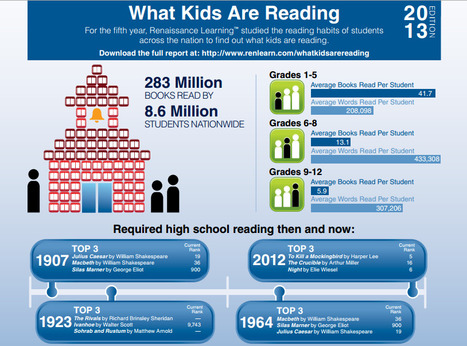"Have you ever wondered why students choose the books that they do? Renaissance Learning explored this question in the fifth-edition What Kids Are Reading report, which lists the top 40 books read by students in grades 1-12 in the 2011-2012 school year. Rankings are based on the Accelerated Reader database, the largest of its kind, which houses reading records for students who read 283 million books."
|
|
Scooped by Beth Dichter |




 Your new post is loading...
Your new post is loading...








This post links to a page that will provide you access to the full report, the infographic (part of which is above), and a report summary. The full report also includes:
* Required high school reading from 1907 to 2012
* Caldecott and Newbury winners from 1922 to present
* A selection of the Common Core State Standards exemplars
There have been many shifts in reading over the last 100 years, and one shift is that the complexity of required reading has decreased. To learn more check any of the resources found through this link. If you prefer an oral version from NPR you can listen to (or read) a short piece aired on June 11th, 2013 called "What Kids are Reading, In School and Out" at http://www.npr.org/blogs/monkeysee/2013/06/11/190669029/what-kids-are-reading-in-school-and-out.